|
Books Should Be Free Loyal Books Free Public Domain Audiobooks & eBook Downloads |
|
|
Books Should Be Free Loyal Books Free Public Domain Audiobooks & eBook Downloads |
|
Romance Novels |
|---|
Book type:
Sort by:
View by:
|
By: Jane Austen (1775-1817) | |
|---|---|
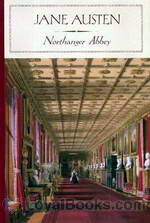 Northanger Abbey
Northanger Abbey
Jane Austen’s Northanger Abbey is a book about the life of Catherine Morland and her romantic relationships. The novel is divided into two parts; the first part begins with Catherine’s visit to Bath and her relationship with Henry Tilney and the other people she met there, and the second part starts with the arrival of Frederick Tilney and her visit to Northanger Abbey. This book alongside Pride and Prejudice and Sense and Sensibility is considered one of the major works of Jane Austen. The novel had undergone many revisions before its publication and it was even originally titled “Catherine... | |
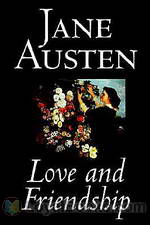 Love and Friendship
Love and Friendship
Begun when she was just eleven years old, Love and Friendship is one of Jane Austen's stories that very few readers may have encountered before. Austen experts feel that this story was written, like many others, only for the pleasure of her family and friends. It is scribbled across three notebooks, in childish handwriting, and the complete work is thought to have been written over a period of six or seven years. It is dedicated to one of her cousins, whom she was very close to, Eliza de Feuillide... | |
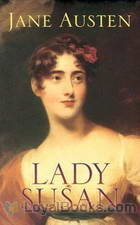 Lady Susan
Lady Susan
An epistolary novel, Lady Susan is an early work by Austen that was posthumously published in 1871. The short novel focuses on the self-serving eponymous anti-heroine, as she cunningly maneuvers her way through society in search of a wealthy husband for both her daughter and herself. Disregarding anything but her own selfish goals, Susan employs her charms to lure men and draw them into her web of deceit, no matter their age or status. Exploring issues including morals, manners, self-indulgence, malevolence, and social machinations, the relatively short novel is sure to fascinate with its atypical form... | |
By: Leo Tolstoy (1828-1910) | |
|---|---|
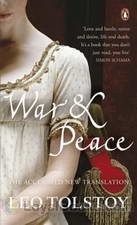 War and Peace
War and Peace
Leo Tolstoy's War and Peace chronicles the lives of five Russian aristocratic families during Napoleon's invasion of Russia. Many considered this book to be the best Russian work of literature of all time and it is massive in scale. The book is divided in four volumes and the chapters don't just contain the narrative of the plot to the novel but philosophical discussions as well. This may be intimidating to average book readers but they shouldn't be discouraged to try reading War and Peace. After all, this book was written for all and not just for intellectuals... | |
By: Lucy Maud Montgomery (1874-1942) | |
|---|---|
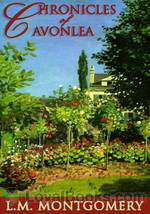 Chronicles of Avonlea
Chronicles of Avonlea
A collection of short stories first published in 1912, the book focuses on events occurring in the popular fictional village of Avonlea, which is notorious as the hometown of Anne Shirley. Comprised of 12 short stories, the Chronicles of Avonlea present a different view of the town, with the introduction of many new gripping characters, which prove to be just as endearing as their most renowned resident. Tales of everyday snippets of life proving to be humorous, identifiable, and heartwarming, the collection is an effective reinvigoration to the classic setting... | |
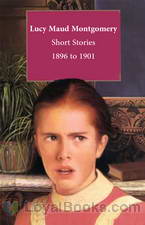 Lucy Maud Montgomery Short Stories, 1896 to 1901
Lucy Maud Montgomery Short Stories, 1896 to 1901
Stories from 1896 to 1901. Lucy Maud Montgomery was born at Clifton (now New London), Prince Edward Island, Canada, on November 30, 1874. She achieved international fame in her lifetime, putting Prince Edward Island and Canada on the world literary map. Best known for her "Anne of Green Gables" books, she was also a prolific writer of short stories and poetry. She published some 500 short stories and poems and twenty novels before her death in 1942. | |
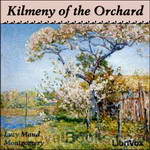 Kilmeny of the Orchard
Kilmeny of the Orchard
Eric Marshall is all that a well brought-up young man should be. Handsome, steadfast, and full of ambition, he is expected to expand the Marshall & Company empire — and to marry a woman suitable to replace his mother in Nova Scotia’s finest circles. When a sick friend asks for a favour, becoming a substitute schoolmaster in the Prince Edward Island countryside seems the perfect post-graduation lark. But when Eric wanders into an old orchard at twilight, his life will be changed forever… | |
By: William Shakespeare (1564-1616) | |
|---|---|
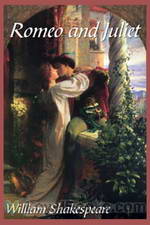 Romeo and Juliet
Romeo and Juliet
William Shakespeare’s most well-known play is more than most people realize. While it is the story of star-crossed lovers, Romeo and Juliet, it is also the story of two families in the middle of a bitter feud. Many people avoid the story because they believe it will be too difficult to read, but this is not true at all. Within a few paragraphs, the play captures your imagination and attention. Juliet is 13 years old and is love with the son of her father’s enemy. Her father has promised that she will marry another boy when it is time, but she refuses to accept the suit... | |
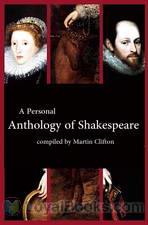 A Personal Anthology of Shakespeare, compiled by Martin Clifton
A Personal Anthology of Shakespeare, compiled by Martin Clifton
This personal anthology is my choice of speeches from Shakespeare that I enjoy reading (that I would like to have had by heart years ago!) and that seem to me to illustrate his unsurpassed use of language. He was a man who seemed to know everything about human nature and as Orson Welles said ‘he speaks to everyone and we all claim him’. I know that it has been said that ‘it is impossible to be a great Shakespearian actor without an idiosyncratic and extraordinary voice’ and this may be so, but that does not preclude ordinary mortals from reading, hearing and enjoying Shakespeare. | |
 The Tempest
The Tempest
Banished from his own lands by a usurping brother, Prospero and his daughter Miranda have been living on a deserted island for years, until fate brings the brother within the range of Prospero's powers. Will he seek revenge, or reconcilement? | |
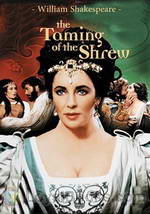 The Taming of the Shrew
The Taming of the Shrew
The Taming of the Shrew is one of Shakespeare's earliest comedies, and was inspired by classical Roman comedy and the Italian commedia dell'arte. Baptista Minola, a rich gentleman of Padua, has two daughters: Katherina, renowned for her sharp tongue, and Bianca, who is sought after by multiple suitors. Baptista decides that Bianca cannot marry until her elder sister finds a husband. Enter Petruchio, who has come to "wive it wealthily in Padua," and who is convinced by Bianca's suitors to woo Katherina. The play ultimately poses the question of who is the bigger shrew: Kate or Petruchio. The subplot involves the subterfuge employed by Lucentio to woo the lovely Bianca. | |
 The Winter's Tale
The Winter's Tale
Mad with jealousy, King Leontes of Sicilia orders his best friend Polixenes killed, his child abandoned, and his wife put on trial for adultery. Sixteen years later, Perdita, raised as a shepherd's daughter, falls in love with Polixenes's royal son and returns to her father's kingdom. | |
 Antony and Cleopatra
Antony and Cleopatra
Antony and Cleopatra is a tragedy by William Shakespeare, believed to have been written sometime between 1603 and 1607. It was first printed in the First Folio of 1623. The plot is based on Thomas North's translation of Plutarch's Life of Marcus Antonius and follows the relationship between Cleopatra and Mark Antony from the time of the Parthian War to Cleopatra's suicide. The major antagonist is Octavius Caesar, one of Antony's fellow triumviri and the future first emperor of Rome. The tragedy is a Roman play characterized by swift, panoramic shifts in geographical locations and in registers, alternating between sensual, imaginative Alexandria and the more pragmatic, austere Rome. | |
 The Merry Wives of Windsor
The Merry Wives of Windsor
The Merry Wives of Windsor is a comedy by William Shakespeare, first published in 1602, though believed to have been written prior to 1597. It features the fat knight Sir John Falstaff, and is Shakespeare's only play to deal exclusively with contemporary Elizabethan era English middle class life. | |
By: Charles Dickens | |
|---|---|
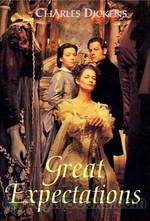 Great Expectations
Great Expectations
From the opening passage itself of Great Expectations by Charles Dickens, the reader is drawn into the world of the hero, Pip, who is at that time, seven years old. The author creates an unforgettable atmosphere: the gloom of the graveyard, the melancholy of the orphan boy, the mists rising over the marshes and the terrifying appearance of an escaped convict in chains. Told in first person (one of the only two books that Dickens used this form for, the other being David Copperfield) Great Expectations is a classic coming of age novel, in which we trace the growth and evolution of Pip or Philip Pirrip to give his full name... | |
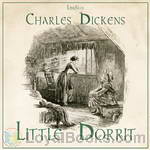 Little Dorrit
Little Dorrit
Originally published in monthly installments between 1855 and 1857, the novel focuses on the various forms of imprisonment, both physical and psychological, while also concentrating on dysfunctional family ties. Accordingly, Dickens avidly criticizes the social deficiencies of the time including injustice, social hypocrisy, the austerity of the Marshalsea debtors’ prison, and bureaucratic inefficiency. The novel kicks off with the introduction of William Dorrit, the oldest prisoner in the Marshalsea prison, who is also referred to as The Father of the Marshalsea... | |
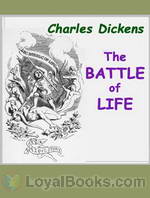 The Battle of Life
The Battle of Life
While "The Battle of Life" is one of Charles Dickens' Christmas Books - his annual release of a story just before Christmas - this one breaks the tradition by not being concerned with Christmas. Rather, its subtitle, "A Love Story", reveals more of the plot. The major events of this book take place on land that once was a battleground. That is just a backdrop for Dickens' idea of the real battle of life - finding and winning the right partner, so that life will go on to the next generation. The family that lives there is rather confused in its affections and intentions regarding who should end up with whom... | |
By: Frances Hodgson Burnett | |
|---|---|
 Theo
Theo
It's described as "A SPRIGHTLY LOVE STORY" and it is written by F. H. Burnett, "one of the most charming among American writers!" | |
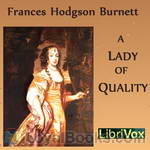 A Lady of Quality
A Lady of Quality
Set in late 1600's England, the story follows the life of a woman living an unconventional life. The loves of her life and all of its ups and downs are included. | |
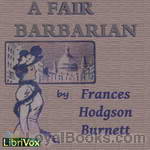 A Fair Barbarian
A Fair Barbarian
The setting is a small English village in the 19th century. When her niece shows up on her doorstep unexpectedly, a quiet spinster finds her life turned upside down. | |
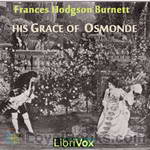 His Grace of Osmonde
His Grace of Osmonde
His Grace of Osmonde, being the portions of that nobleman's life omitted in the relation of his Lady's story presented to the world of fashion under the title of 'A Lady of Quality'Set in late 1600's England, the story follows the life of a woman living an unconventional life. The loves of her life and all of its ups and downs are included. And as above, has more of the story of the Duke who becomes the love of her life. | |
 Vagabondia 1884
Vagabondia 1884
| |
 That Lass O' Lowrie's 1877
That Lass O' Lowrie's 1877
Frances Hodgson Burnett was born and grew up in Manchester, England, and emigrated to the United States with her family at the age of 16. For her first novels, written in Knoxville, Tennessee and published in New York, she drew upon her knowledge of life and speech of the Lancashire working classes. Set in a Lancashire mining town, That Lass o' Lowries is a gritty, and at times brutal, tale of romance across the classes, which stands in stark contrast to her later work. | |
 "Le Monsieur de la Petite Dame"
"Le Monsieur de la Petite Dame"
| |
 One Day At Arle
One Day At Arle
| |
By: Charlotte Brontë (1816-1855) | |
|---|---|
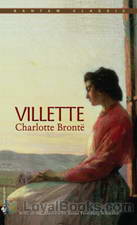 Villette
Villette
Villette was Charlotte Bronte's last published novel. It came out in 1853, just two years before her death in 1855. It is a poignant, strangely lonely and sad work, steeped in conflict between society's demands and personal desires. Set in the fictional town of Villette in France, it is the story of the young and intelligent Lucy Snowe, the narrator in the book. She is described by another character in the book as having “no beauty...no attractive accomplishments...” and strangely seems to lack a personal history or living relatives... | |
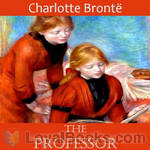 The Professor
The Professor
The book tells the story of a young man named William Crimsworth. It describes his maturation, his loves and his eventual career as a professor at an all-girls’ school. | |
By: Robert Louis Stevenson | |
|---|---|
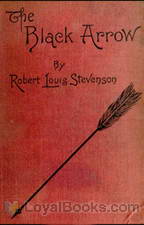 The Black Arrow; a Tale of Two Roses
The Black Arrow; a Tale of Two Roses
The Black Arrow tells the story of Richard (Dick) Shelton during the Wars of the Roses: how he becomes a knight, rescues his lady Joanna Sedley, and obtains justice for the murder of his father, Sir Harry Shelton. Outlaws in Tunstall Forest organized by Ellis Duckworth, whose weapon and calling card is a black arrow, cause Dick to suspect that his guardian Sir Daniel Brackley and his retainers are responsible for his father’s murder. Dick’s suspicions are enough to turn Sir Daniel against him, so he has no recourse but to escape from Sir Daniel and join the outlaws of the Black Arrow against him... | |
By: Thomas Hardy (1840-1928) | |
|---|---|
 The Return of the Native
The Return of the Native
Amidst the fireworks and celebrations of Guy Fawkes Night, a covered wagon winds its way along the dark country heath land. Hidden at the back is a young woman who is running away from a thwarted marriage ceremony with the local innkeeper. The driver of the wagon, a young herdsman, is secretly in love with her but is so devoted that he vows to help her reunite with her useless lover. The opening scenes of Thomas Hardy's sixth novel The Return of the Native, form the backdrop to this story of a profoundly flawed woman and the men who fall in love with her... | |
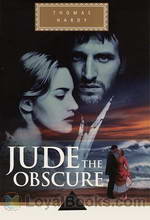 Jude the Obscure
Jude the Obscure
A young man from a poor, working-class background, passionate about education, who aspires to become a professor. His teacher, a respected role model who turns out to have feet of clay. An independent, free-spirited woman. Another who is scheming, selfish and flirtatious. Dominating their lives is the magnificent university town of Christminster. All these and a host of other colorful, memorable characters inhabit the pages of Thomas Hardy's monumental fourteenth novel published in 1895. Thomas Hardy's fame as a novelist rivals that of even Dickens in Victorian literature... | |
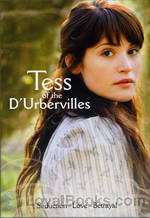 Tess of the d'Urbervilles
Tess of the d'Urbervilles
Her father compels her to visit the biggest mansion in the village to “claim kin” with the aristocratic d'Urberville family. She falls prey to the debauched son of the house and returns home to give birth in secret to an illegitimate baby who lives only for a few days. Determined to put her past behind her, she goes to work as a milkmaid in a faraway country farmhouse where she falls in love with a good and kind young man. Her conscience troubles her and she confesses the truth about herself in a letter which her beloved never receives... | |
 Under the Greenwood Tree
Under the Greenwood Tree
This novel is subtitled The Mellstock Quire, A Rural Painting of the Dutch School. The Quire is the group of musicians who accompany the hymns at the local church and we follow the fortunes of one member, Dick Dewy, who falls in love with the new school mistress, Fancy Day. Another element of the book is the battle between the traditional musicians of the Quire and the local vicar, Parson Maybold, who installs a church organ. This battle illustrates the developing technology being introduced in the Victorian era and its threat to traditional country ways... | |